Throw open the door and welcome back Orion at dawn. The Hunter's return brings relief from the heat and gives us a fresh shot at exploring winter deep-sky objects in comfort.
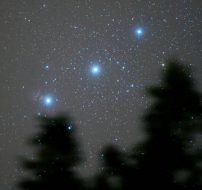
Bob King
We might rise at dawn to see an eclipse, a bright new comet, or a meteor shower. But few of us would deliberately lose sleep to see a constellation. Unless that constellation was Orion. Every August, I attend a star party where seeing Orion rise in morning twilight is something of a badge of honor. If you're serious about making the most of the night, you'll stay up until Betelgeuse flits between the oak leaves.
After weeks of summer heat and humidity, we seek the cool breath of winter, finding it just before dawn in the guise of Orion. I love seeing him tilt upward above the trees in late summer while listening to the soft clatter of leaves in the breeze.
Exploring the Orion Nebula while wearing a short-sleeved shirt is a rare privilege, and there's no better time to grab a pencil and make a sketch. Or take a guided photo of the Belt or one of the constellation's many nebulae. Sure beats numb fingers and the agony of wind chill.
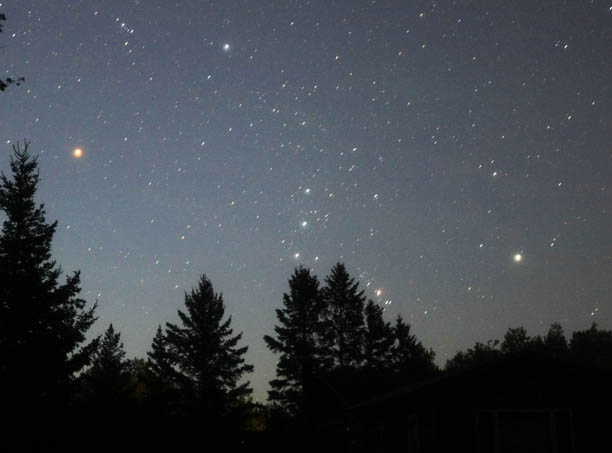
Bob King
Mid-southern latitude skywatchers must associate their Orion with the coming of summer, a concept difficult to imagine for northerners but no less valid. So it is with associations we make between the stars and the seasons. Frost and the rich aroma of leaf decay are forever paired with the Pegasus Square as icy stillness is with Orion.
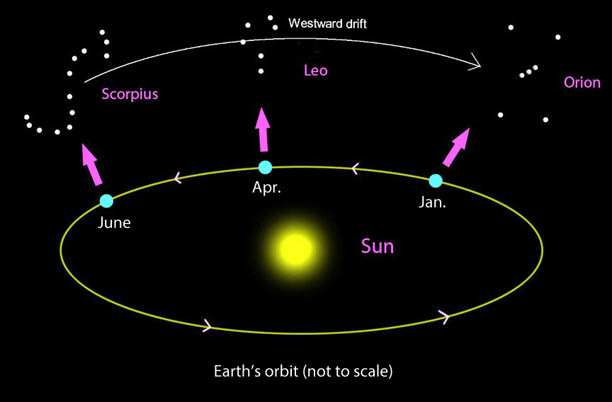
Bob King
Earth's tour around the Sun recycles the constellations once a year. Every August at dawn, we stand with our backs to the galactic center, looking outward through the Orion Arm (or Spur) and into the Perseus Arm of the Milky Way galaxy. Nearby stars within the Spur align to form the striking belt and rectangular outline of the Hunter. Every day that passes, he's up four minutes earlier than the one before, "pushed" westward by Earth's revolution to the tune of 1.6 million miles (2.6 million km) a day. Come October, Orion rises at midnight; in late December, he appears at nightfall.
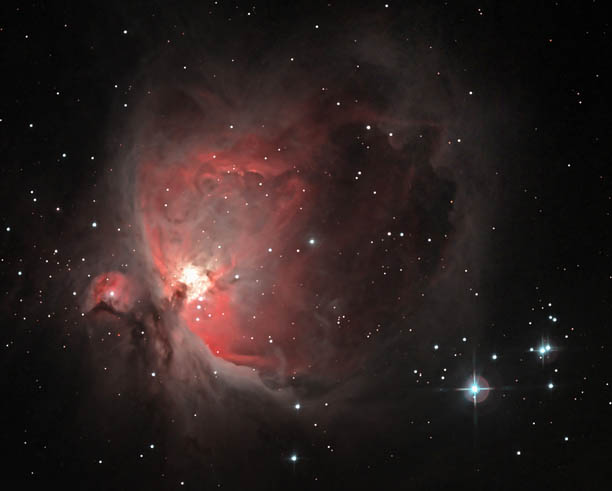
Rawastrodata / CC BY-SA 3.0
Each year's reacquaintance with the constellation provides another opportunity to dig out that deep-sky object or double star that weather or commitments prevented you from seeing the previous season. We all know the benefits of recycling; when it comes to skywatching, it means the opportunity for a fresh look with every yearly orbit.
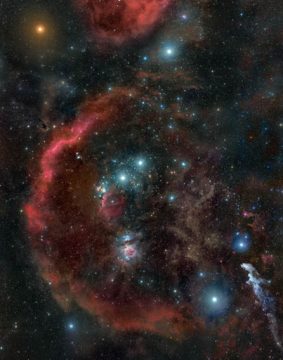
Rogelio Bernal Andreo / CC BY-SA 3.0
You may do things differently, but I return at least 10 times a season to gaze at the Orion Nebula, which offers so much on so many levels.
A short list of things to look for inside this beautific bubble:
* Trace the extent of the nebula's outer "arms." Can you follow them all the way out until they touch to form a loop?
* Dig out the half dozen or so faint stars buried within the "curdled milk" of the nebula's bright central region near the Trapezium.
* Check the brightness and behavior of young variable stars such as T Orionis, which show continuous and erratic changes in brightness easily followed in small telescopes.
* Resolve the fifth and sixth members of the Trapezium multiple star on nights of good seeing.
* Examine how the appearance of the nebula changes when viewed through a variety of narrowband filters. You'll be surprised how different the it looks in OIII vs. H-beta filters.
* Visualize the nebula in three dimensions by deliberately viewing the dark patches of nebulosity in both M42 and neighboring M43 as in the foreground silhouetted against the bright material behind it.
And that's just one object in a constellations replete with every kind of deep-sky bonbon but a globular cluster. (For that you'll have to hop down to nearby Lepus to M79.) Sometimes a new telescope inspires taking a fresh look at a returning constellation. This season, I'm looking forward to wending my way along the brighter (northern) half of Barnard's Loop with a 10-inch short focus instrument and O III filter. Such a large object could mean several nights of adventuring. Maybe I'll put on a sweater and begin my pilgrimage in September.
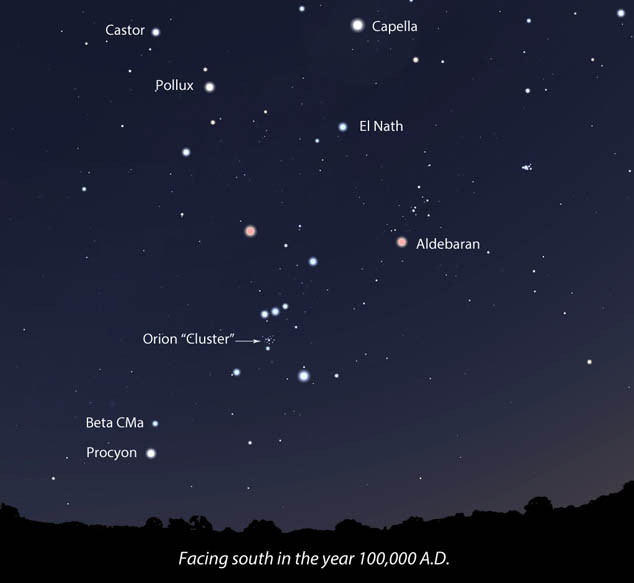
Map: Bob King, Source: Stellarium
Would that we could live lives more in line with the great cosmic cycles, say on the order of 100,000 years. That's about the time remaining for the Orion Nebula to process itself into a Pleiades-like star cluster, a dazzling heap of stellar gems with a few remaining wisps of lingering nebulosity. Would we still find more to see in Orion on that distant date as Earth traces yet another orbital loop? Of course!
 8
8








Comments
Nilson-Bazana
August 31, 2016 at 4:03 pm
Ha, ha. Over here in Brazil, with its scourging Summer temperatures, some of us get to observe Orion (remember, during the November-December period it's high Summer) with no shirt at all, mind you.
You must be logged in to post a comment.
Bob KingPost Author
September 1, 2016 at 12:26 am
Nilson-Bazana,
And maybe all year round from your tropical latitude!
You must be logged in to post a comment.
Graham-Wolf
September 1, 2016 at 9:18 pm
Excellent article, Bob! As a keen youngster in the late 1950s, I first learned the South Cross (as all us Kiwis do), then it was over to the other side of the night sky to learn mighty Orion! Then down and left to the Pleiades (M45) In the antipodes we see Orion "upside-down and back to front, to you Yanks.... but we still see it's might nebulosity M42! Excellent wide field pics, too, Bob! I think you've just fired up a new generation of star-gazers, out there. I can also recommend the rings of Saturn and several awesome lunar craters... try Copernicus, Tycho, Plato.... just for starters! Keep up the great work, Bob. Regards from NZ, Graham Wolf.
You must be logged in to post a comment.
Bob KingPost Author
September 2, 2016 at 8:25 am
Thank you Graham. And I appreciate your Kiwian perspective!
You must be logged in to post a comment.
Redflicker
September 14, 2016 at 11:34 am
Hi Bob, I got up this morning and found Orion and friends among a beautiful sky! I've been saving this article for just the right day. Tomorrow I'll make it a little earlier and bring out the big guns. Thanks for the great "ahhaa!" moment, again! Rich
You must be logged in to post a comment.
Bob KingPost Author
September 14, 2016 at 11:39 am
Sounds like a beautiful morning, Redflicker. I love starting my day with Orion and had the opportunity to do so last week. Even hauled out the scope to peek at the nebula. Thanks for your comment!
You must be logged in to post a comment.
Redflicker
September 15, 2016 at 4:09 pm
I brought out my 8" dob along with a couple pair of binoculars this a.m. Oh, what a great start to this vacation day! So much to see around Orion, the dawn came too quickly! Once more into the breach tomorrow, earlier still! Never would have known about this morning marvel without your article. Thanks...
You must be logged in to post a comment.
Bob KingPost Author
September 15, 2016 at 4:13 pm
Redflicker,
There's nothing like being on vacation -- makes it so much easier to get up at dawn without the stress of working the day. I'm delighted you liked the article.
You must be logged in to post a comment.
You must be logged in to post a comment.